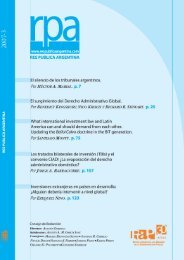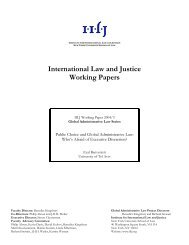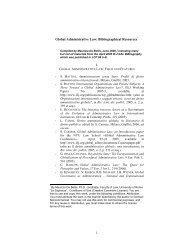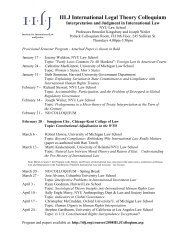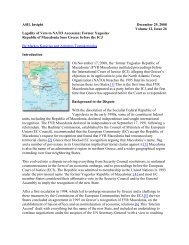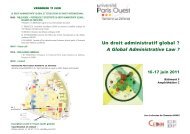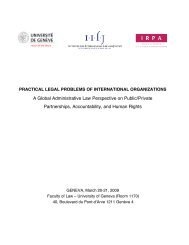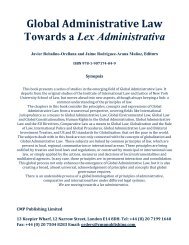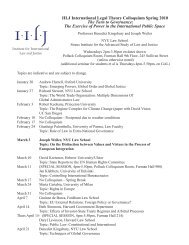brought under the dominican republic - central america - ita
brought under the dominican republic - central america - ita
brought under the dominican republic - central america - ita
You also want an ePaper? Increase the reach of your titles
YUMPU automatically turns print PDFs into web optimized ePapers that Google loves.
would qualify for treaty protections <strong>under</strong> CAFTA, <strong>the</strong>reby making CAFTA Article<br />
10.12.2 redundant. The Respondent submits that this absurd result cannot be <strong>the</strong> correct<br />
interpretation of <strong>the</strong> relevant treaty language in CAFTA <strong>under</strong> international law.<br />
4.10. In regard to <strong>the</strong> Claimant‟s alleged investments made in El Salvador, <strong>the</strong> Respondent<br />
refers to wire transfers coming not from <strong>the</strong> Claimant but from its Canadian parent<br />
company (ei<strong>the</strong>r Pacific Rim or its predecessor); Mr Shrake‟s confirmation to such<br />
effect in a press release of 3 July 2008, as also explained by Mr Shrake during his<br />
oral testimony [D2.488xx]; and <strong>the</strong> Claimant's slender reliance upon a fragmentary<br />
page from an unconsolidated and apparently unaudited balance sheet purporting to<br />
show <strong>the</strong> Claimant carrying an investment in El Salvador as an “asset”. As to <strong>the</strong> latter,<br />
<strong>the</strong> Respondent submits that this entry proves nothing as to whe<strong>the</strong>r <strong>the</strong> Claimant<br />
itself actually made that investment in <strong>the</strong> first place (as opposed to its Canadian<br />
parent company); and that all it could show, at most, is that at some unidentified<br />
time this asset was ostensibly placed on <strong>the</strong> Claimant‟s books. In any event, <strong>the</strong> Respondent<br />
submits that this “thinly documented indication” of apparent ownership of<br />
an asset located in El Salvador cannot constitute substantial business activities by <strong>the</strong><br />
Claimant in <strong>the</strong> USA for <strong>the</strong> purposes of CAFTA Article 10.12.2.<br />
4.11. (ii) Ownership/Control: The Respondent contends that <strong>the</strong> Claimant was both<br />
owned and controlled by persons of a non-CAFTA Party. As to <strong>the</strong> twin contrary arguments<br />
advanced by <strong>the</strong> Claimant, <strong>the</strong> Respondent contends that nei<strong>the</strong>r can succeed<br />
in defeating this straightforward conclusion <strong>under</strong> CAFTA, as a matter of treaty<br />
interpretation and as a matter of undisputed or indisputable fact.<br />
4.12. First, so <strong>the</strong> Respondent submits, <strong>the</strong> Claimant wrongly applies <strong>the</strong> plain language of<br />
CAFTA to argue not <strong>the</strong> ownership of <strong>the</strong> Claimant, but <strong>the</strong> different ownership of<br />
<strong>the</strong> Claimant's Canadian parent company (Pacific Rim); and second, <strong>the</strong> Claimant<br />
wrongly asserts that because <strong>the</strong> majority of <strong>the</strong> shares in <strong>the</strong> Canadian parent are allegedly<br />
held by persons with postal addresses in <strong>the</strong> USA, <strong>the</strong>n it must follow that<br />
<strong>the</strong> Canadian parent company is owned by persons of a CAFTA Party (namely <strong>the</strong><br />
USA) and thus <strong>the</strong> Claimant, as <strong>the</strong> Canadian parent‟s subsidiary, is indirectly also<br />
owned by persons of that same CAFTA Party (<strong>the</strong> USA).<br />
Part 4 - Page 4



